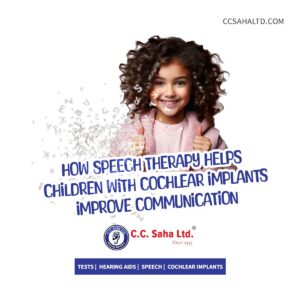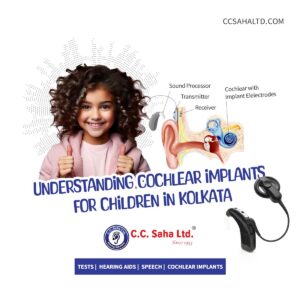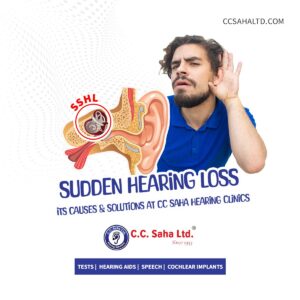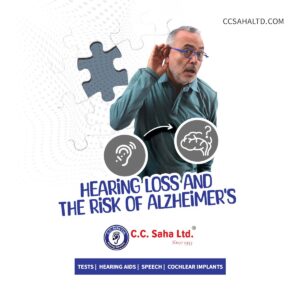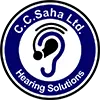Common Causes of Hearing Loss in India
Noise Pollution
The relentless cacophony of traffic, industrial machines, and construction sites exposes many individuals to excessive noise, leading to noise-induced hearing loss.
Ear Infections
Frequent and untreated ear infections, particularly in children, can cause permanent damage to the delicate structures of the ear.
Genetics
Hereditary factors play a significant role in hearing loss, making it essential to understand one’s family history and the potential for genetic predisposition.
Aging (Presbycusis)
As people age, the inner ear structures naturally deteriorate, resulting in age-related hearing loss known as presbycusis.
Occupational Hazards
Certain professions, such as construction, manufacturing, and aviation, expose workers to high levels of noise, putting them at risk of occupational hearing loss.
Medications
Some medications, known as ototoxic drugs, have the potential to damage the hair cells in the inner ear, leading to hearing impairment.
Head Trauma
Head injuries, particularly those that involve the ear, can result in hearing loss.
Chronic Illnesses
Conditions like diabetes and hypertension can affect blood flow to the ears, potentially causing hearing problems.
Malnutrition
A lack of essential nutrients, particularly in children, can impair the development of the auditory system and lead to hearing loss.
Poor Ear Care
Inadequate ear hygiene and the use of sharp objects to clean the ears can cause damage to the ear canal and eardrum, resulting in hearing loss.
Treatment Options for Hearing Loss
Hearing Aids
How They Work: Hearing aids are small electronic devices designed to amplify sounds, making them more audible to individuals with hearing loss. They come in various styles, including behind-the-ear, in-the-ear, and in-the-canal, catering to different hearing needs.
Advantages: Hearing aids are non-invasive, easily customizable, and highly effective in improving communication and overall quality of life for many people with hearing loss.
Considerations: Proper fitting and adjustments are crucial, and regular maintenance is necessary to ensure the device functions optimally.
Cochlear Implants
How They Work: Cochlear implants are surgically implanted devices that bypass damaged parts of the ear and directly stimulate the auditory nerve. They are typically recommended for individuals with severe to profound hearing loss.
Advantages: Cochlear implants can provide significant hearing improvement and are often a game-changer for those who do not benefit from hearing aids.
Considerations: The implantation process involves surgery and rehabilitation to adapt to the new way of hearing.
Bone-Anchored Hearing Aids (BAHA)
How They Work: BAHA devices are surgically implanted and use bone conduction to transmit sound directly to the inner ear. They are often suitable for individuals with conductive hearing loss or single-sided deafness.
Advantages: BAHA devices are less visible than traditional hearing aids and offer good sound quality.
Considerations: Implant surgery is required, and individuals need a trial period to adapt to the device.
How It Works: Speech therapy, also known as auditory-verbal therapy, is a valuable treatment option for individuals with hearing loss, especially children. It focuses on developing communication and listening skills.
Advantages: Speech therapy helps individuals improve their ability to understand and communicate effectively.
Considerations: Regular sessions and commitment are essential for success.
Deafness, a Social Stigma
Hearing is vital for speech development, communication, and personality growth. It is the second most common disability in India, after locomotor disability. Disabling hearing loss is over 40 dB in better ear, above 15 years, and greater than 30 dB below 14 years.
Even in today’s modern society, hearing loss remains stigmatized, unlike vision loss or cardiac issues. People with hearing disabilities are often reluctant to wear hearing aids due to the negative perception associated with hearing loss. This perception includes being considered “old,” having poor communication skills, and uninteresting or boring. As a result, people avoid wearing hearing aids to avoid embarrassment, appearing disabled, or becoming the centre of backhanded hummer. This reluctance can lead to disconnection from the world, which can contribute to depression, dementia, and ageing.
It’s important to remember that the impact of any verbal comment or the fear of it is far smaller than the significant health risk that comes with not wearing the right hearing aid at the right time.
Another reason why people may avoid wearing hearing aids is because they can be quite visible, especially the ones that go behind the ear. However, smaller hearing aids that fit inside the ear or canal can be expensive and may not be suitable for all ear canals or hearing loss types. Social stigma and financial burden often affect the purchasing decision for many people who need hearing help.
Low confidence in buying a hearing aid can result from unrealistic expectations, poor awareness of technology, poor counselling, and availability, and the lack of positive advocacy from current hearing aids users.
However, the advancements in technology have made hearing aids more affordable than before, and there are various brands with various payment options and flexible instalment schemes to suit buyers.


